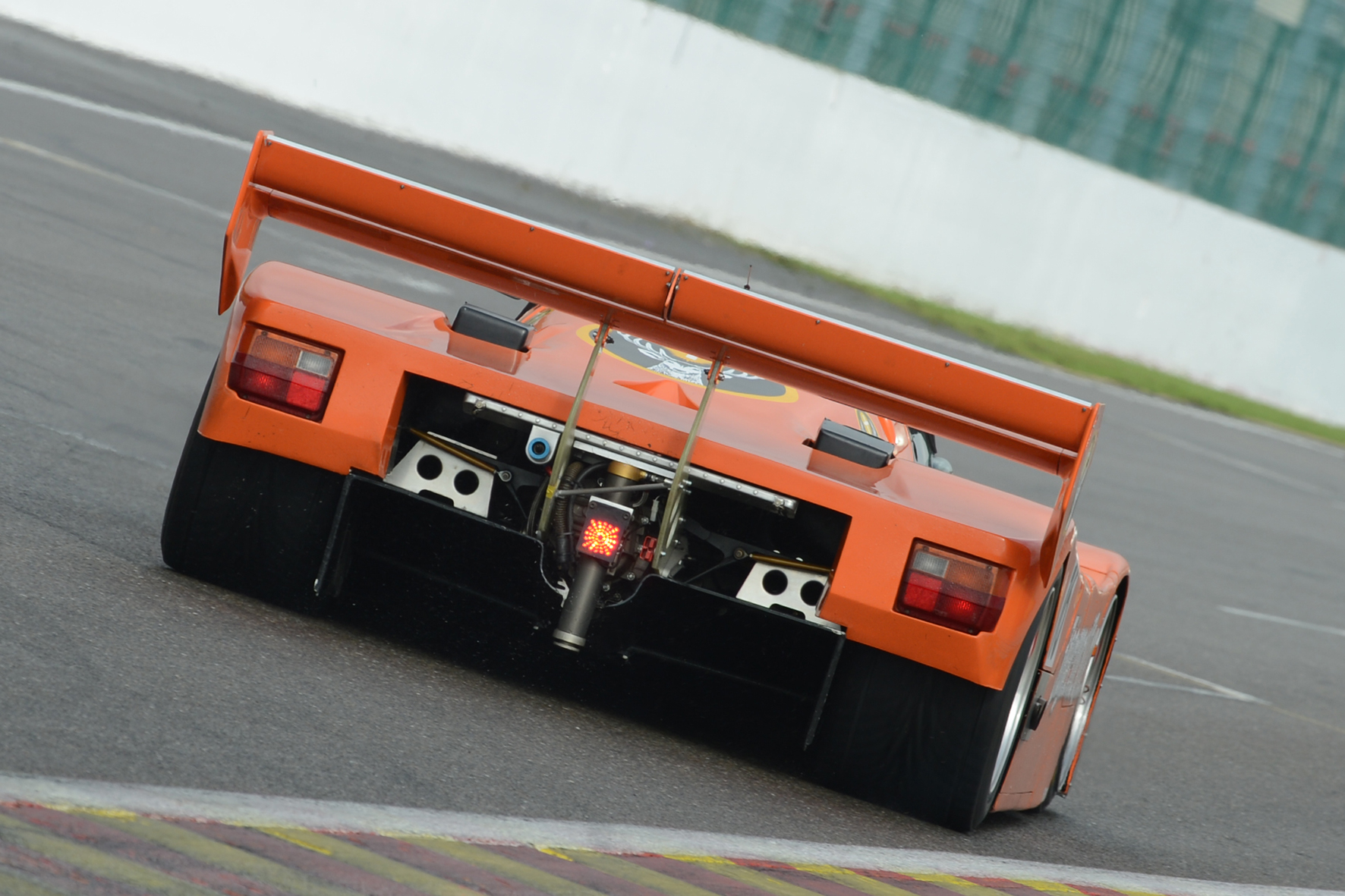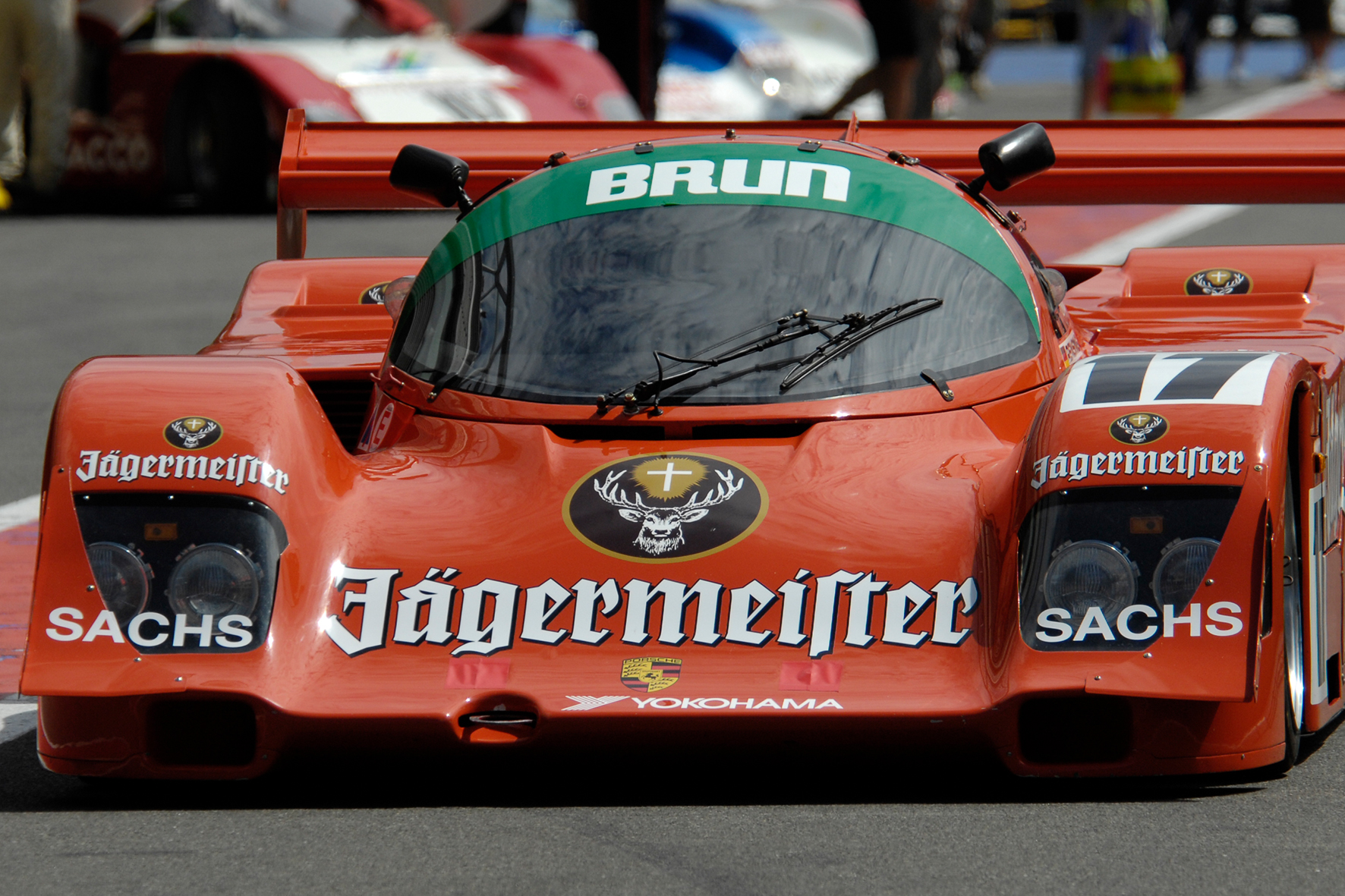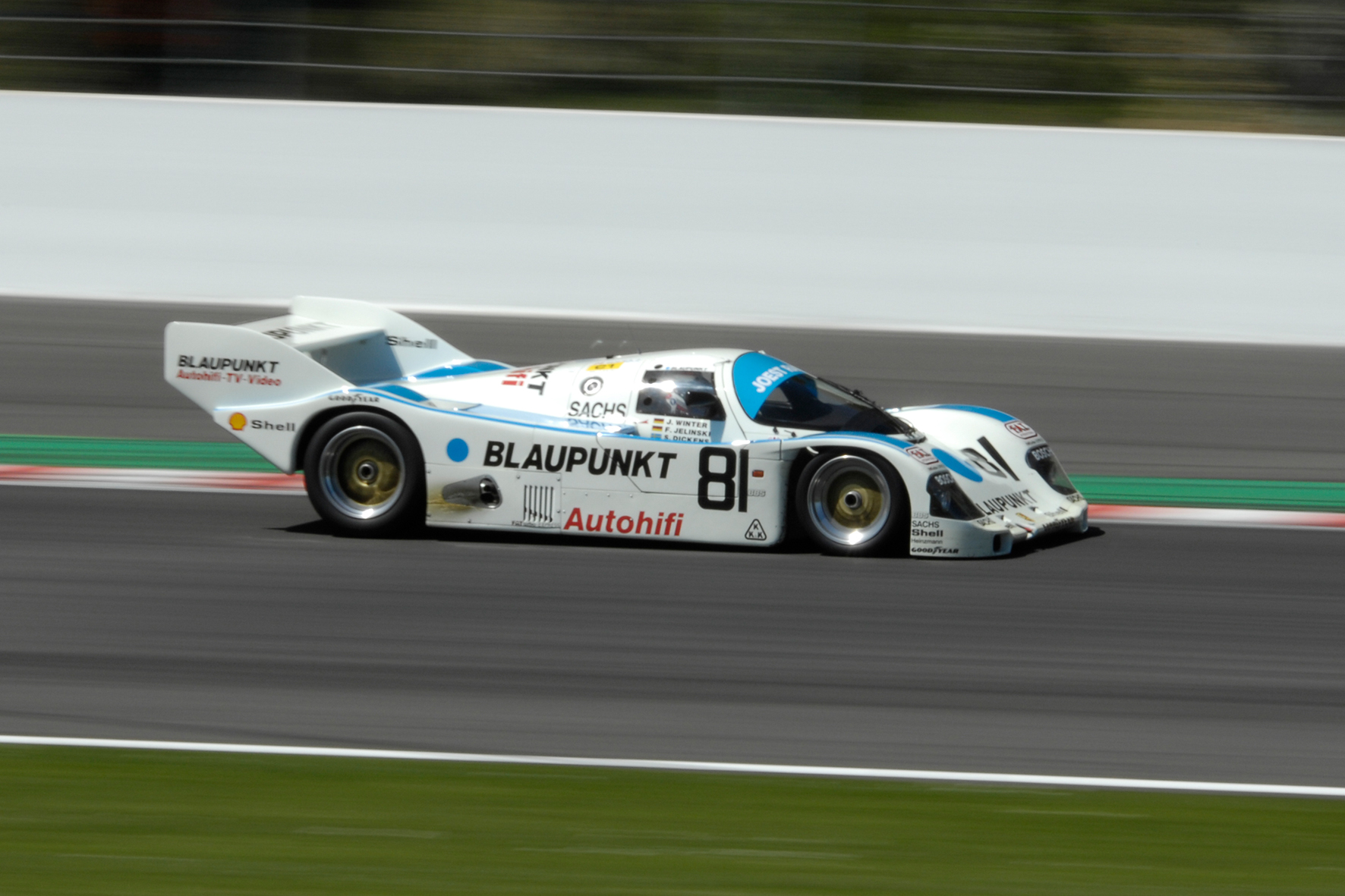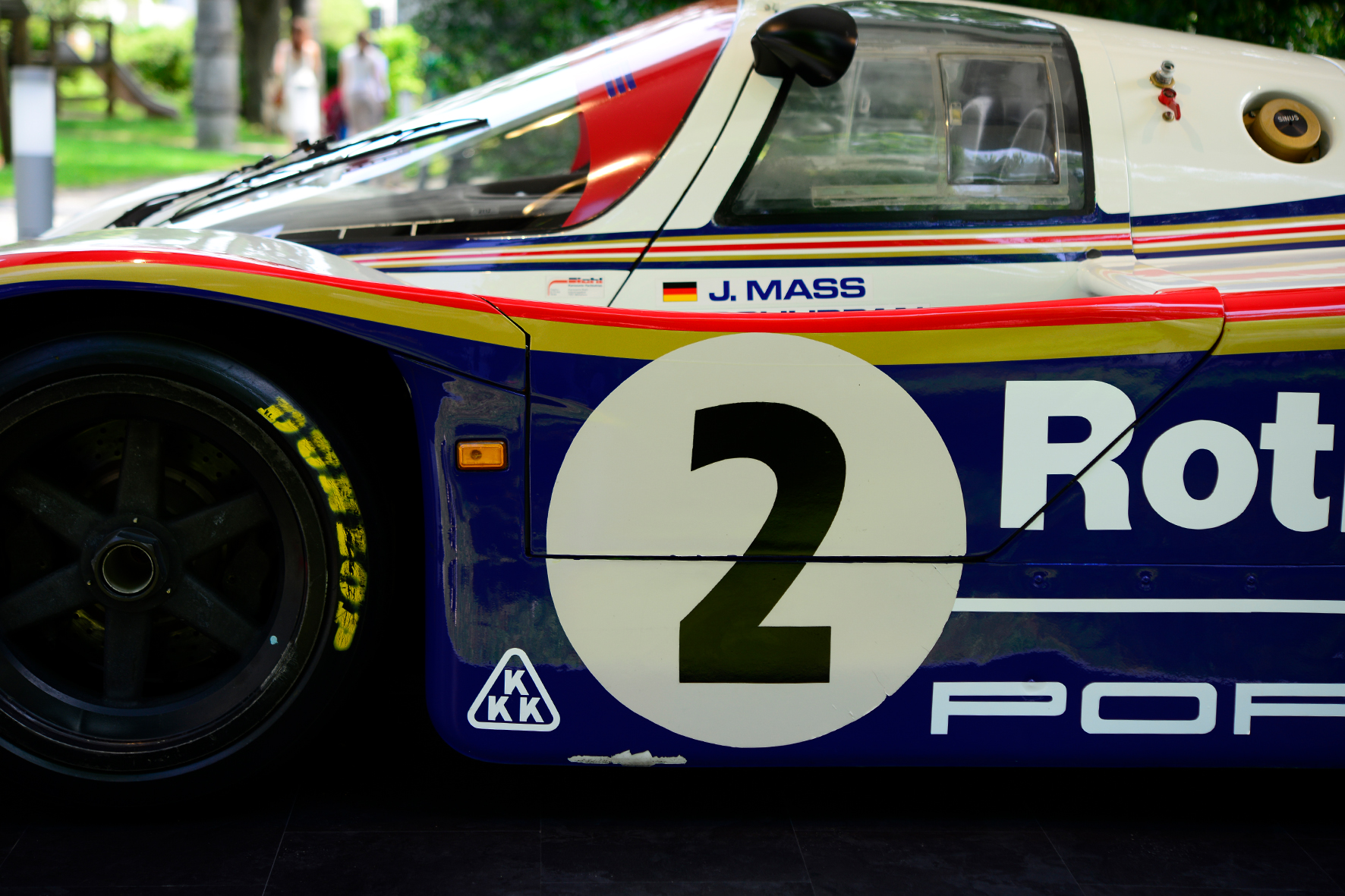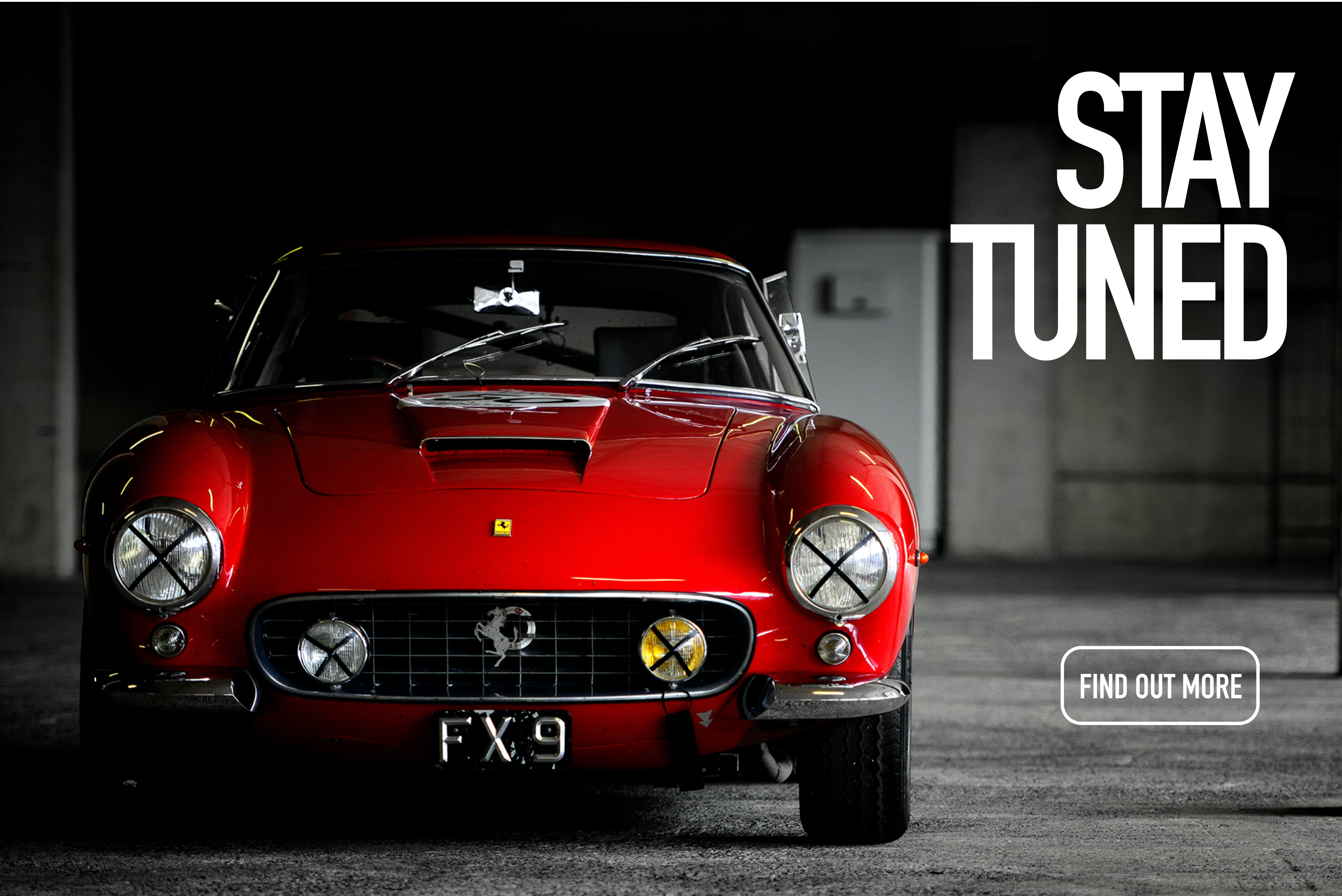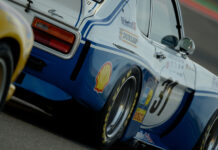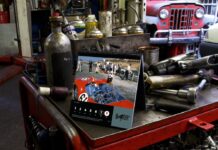The Porsche 956 was a Group C Sports-Prototype racing car designed by Norbert Singer and built by the Porsche factory in 1982 to compete in the FIA World Sportscar Championship. It was later upgraded to the 956B version in 1984.
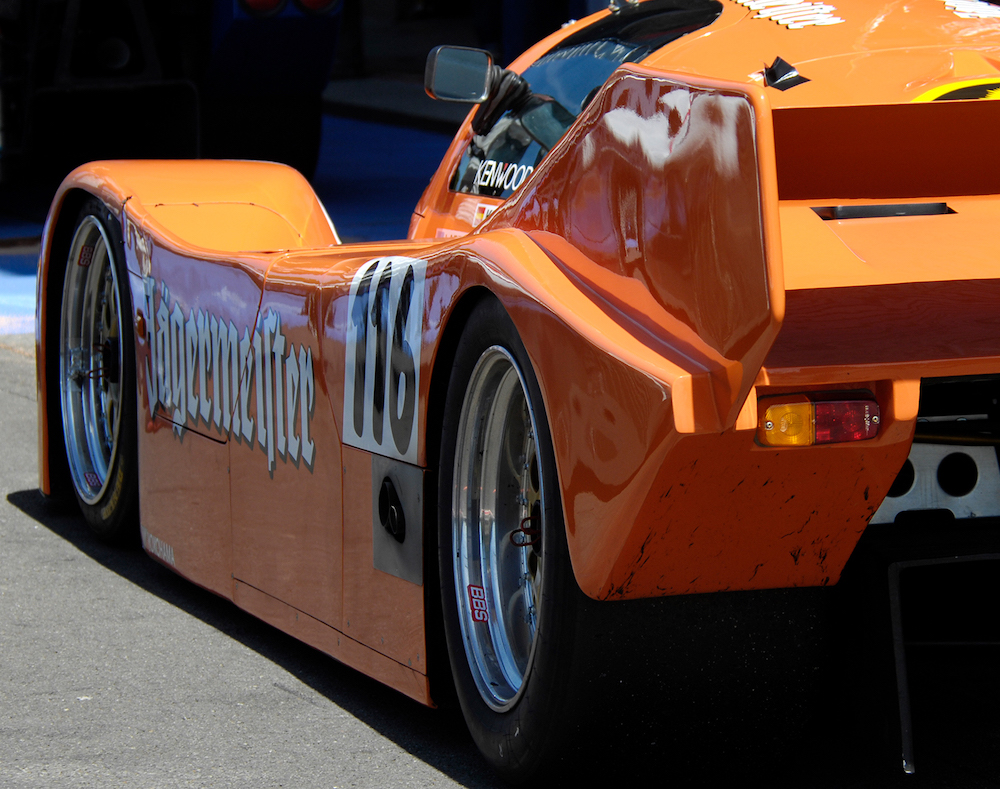
Built to comply with the championship’s new Group C regulations which were introduced in 1982, the car was a replacement for Porsche’s successful 936 model which competed in the previous Group 6 category of the World Championship. Th project started in June 1981 and the first chassis were completed in March 1982, just in time for the beginning of the new season. Jürgen Barth tested the first chassis at Porsche’s private test track in Weissach.
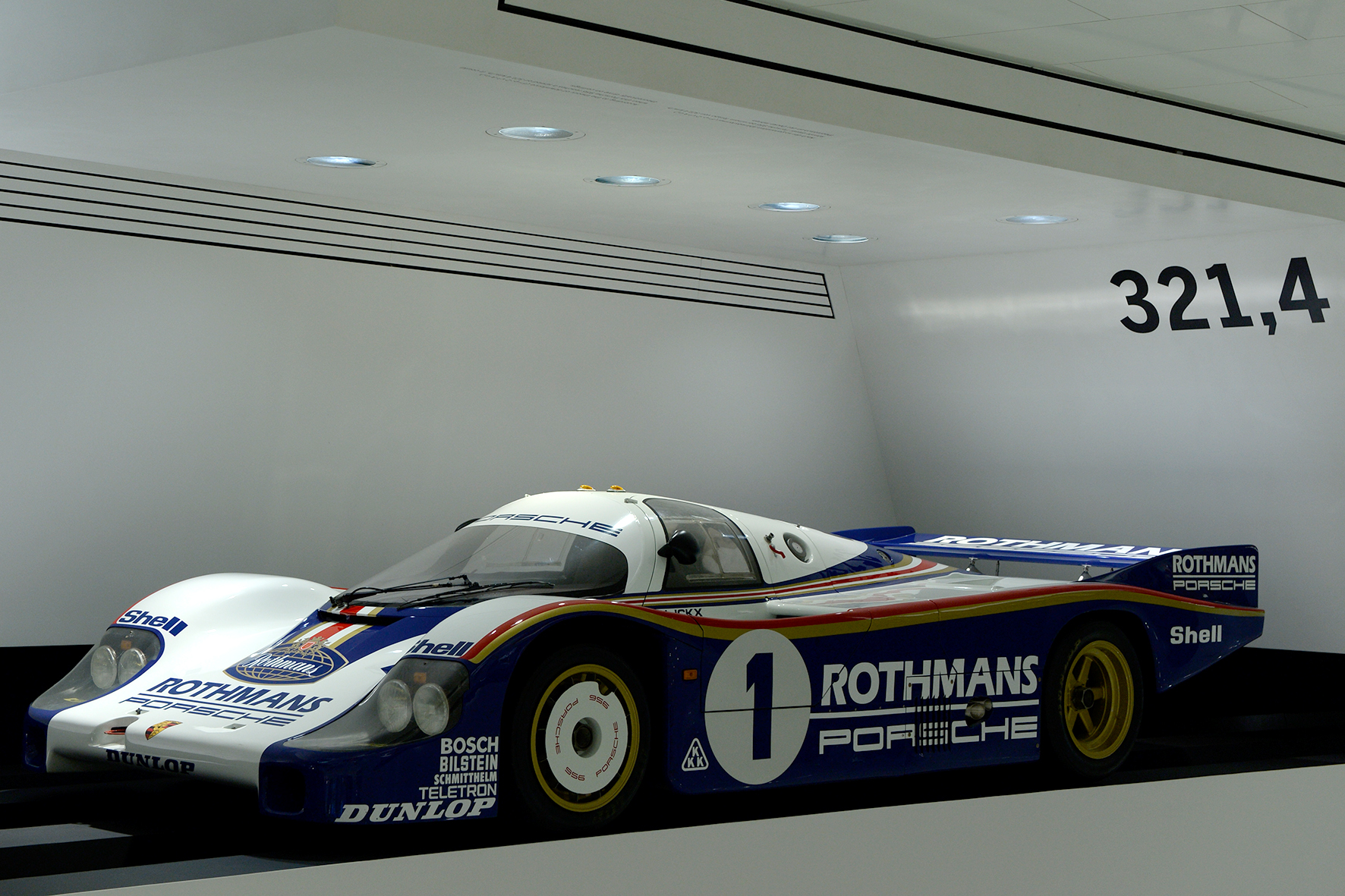
The 956 features a chassis made of an aluminium monocoque, helping to allow the car to reach the 800 kg weight minimum in Group C. The engine is the same as the one used in the 936/81 the Type-935 2.65 L turbocharged flat-6 producing approximately 635 hp (originally developed as an Indycar engine). The very first dual-clutch-gearbox was developed for the use in the 956, mated to a traditional 5-speed manual.
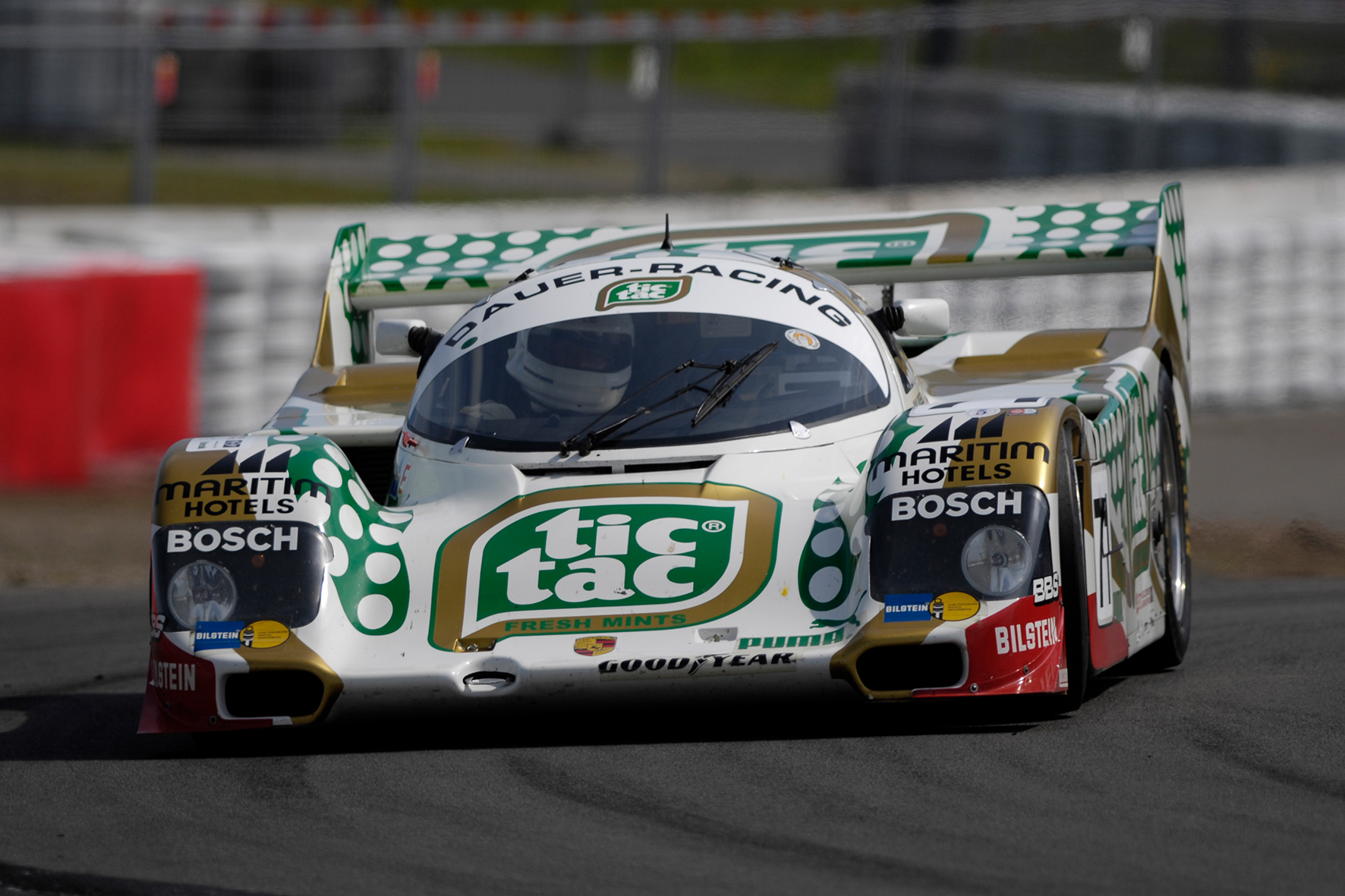
The Porsche 956 made its debut a the Silverstone 6H race, the second race of the World Championship of Makes in 1982 with Jacky icky and Derek Bell driving for the factory. But the main target for 1982 was the 24 Hours at Le Mans. The factory took part there with three cars, chassis number #002, #003 and #004. After missing the Nürburgring race because of developing work the cars were well prepared for the greatest of all races, the 24 Hours At LeMans.

Ickx / Bell as the pre years winner were starting with the Number 1 in chassis #002. They led the race through the entire 24 hours and took the overall win, their third win at Le Mans together, followed by the two other Porsche 956 in order of their chassis numbers. Jürgen Barth entered the podium as part of the third placed team. The Porsche 956 were so strong and reliable, they didn’t gave any little chance to their opponents which were hopeless behind them. Porsche won every race of the 1982 season (!), winning the constructors title and Jacky Ickx took the driver’s crown in 1982.

After the 1982 season Porsche built eleven 956 cars which should go on sale for customers for 630.000 DM. Of course these cars were quickly sold out and were entered by private teams such as Brun Motorsport, Kremer Racing, Joest Racing, John Fitzpatrick Racing and Obermaier Racing.
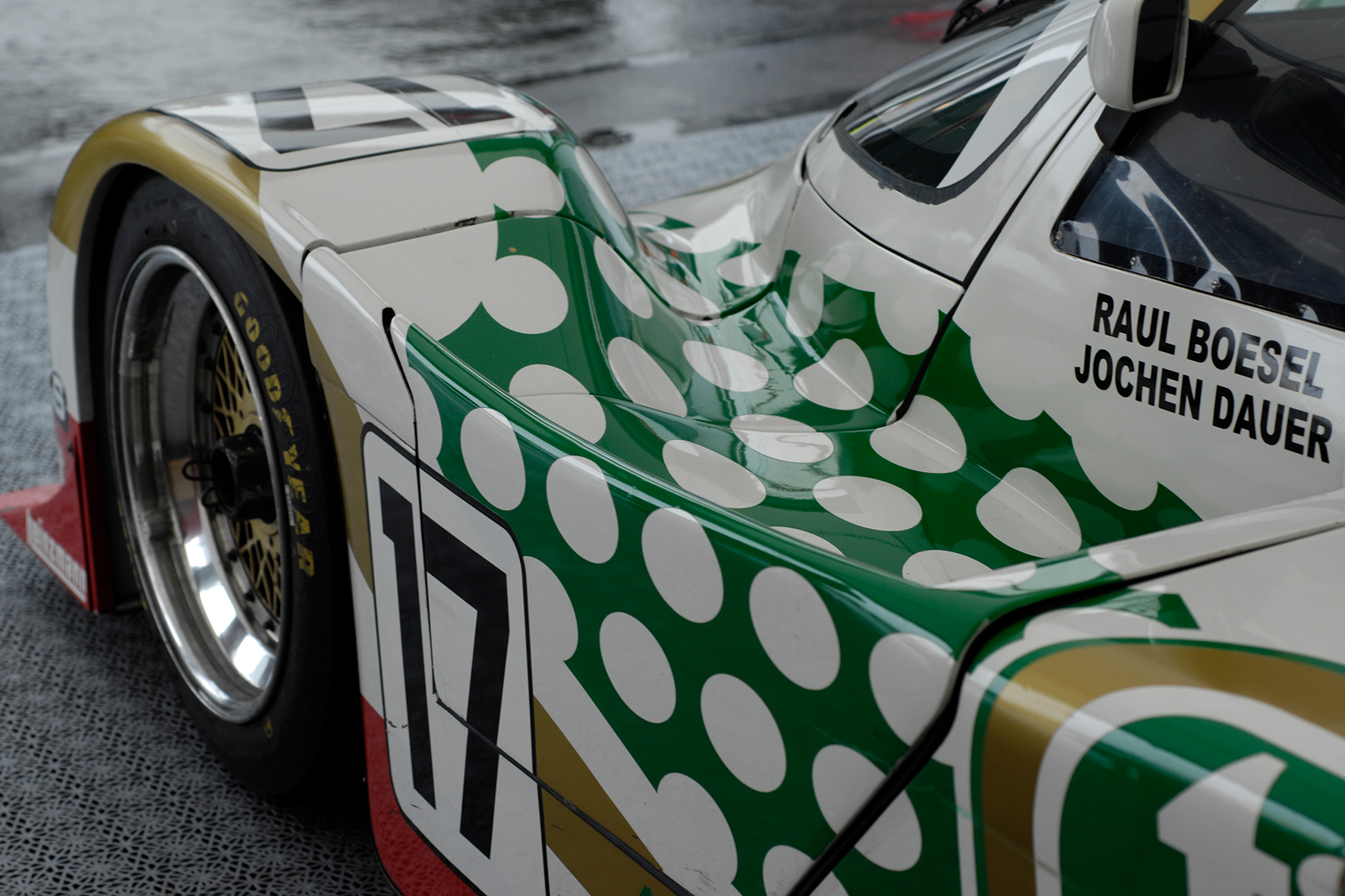
The ground effect of the Porsche 956 is so strong, at a speed of 314,5 km/h the car could drive upside down, in the Porsche museum this fact is visualized with a Rothman’s Porsche.

Then in 1983 Stefan Bellof, a very young, very talented and very fast driver from Germany became a Porsche works driver. At the 1000 km race at the Nürburgring he set a lap record in qualifying by 6:11.31 min. with an average speed of 202 km/h at the the famous and very dangerous 20,832 km Nordschleife. He was the first man who realized such a high average speed there.
Also the lap record of the race is set by Stefan Bellof with 6:25.91 min. The qualifying record stood for 35 years, it was broken by Timo Bernhard in 2018 with a Porsche 919 EVO.
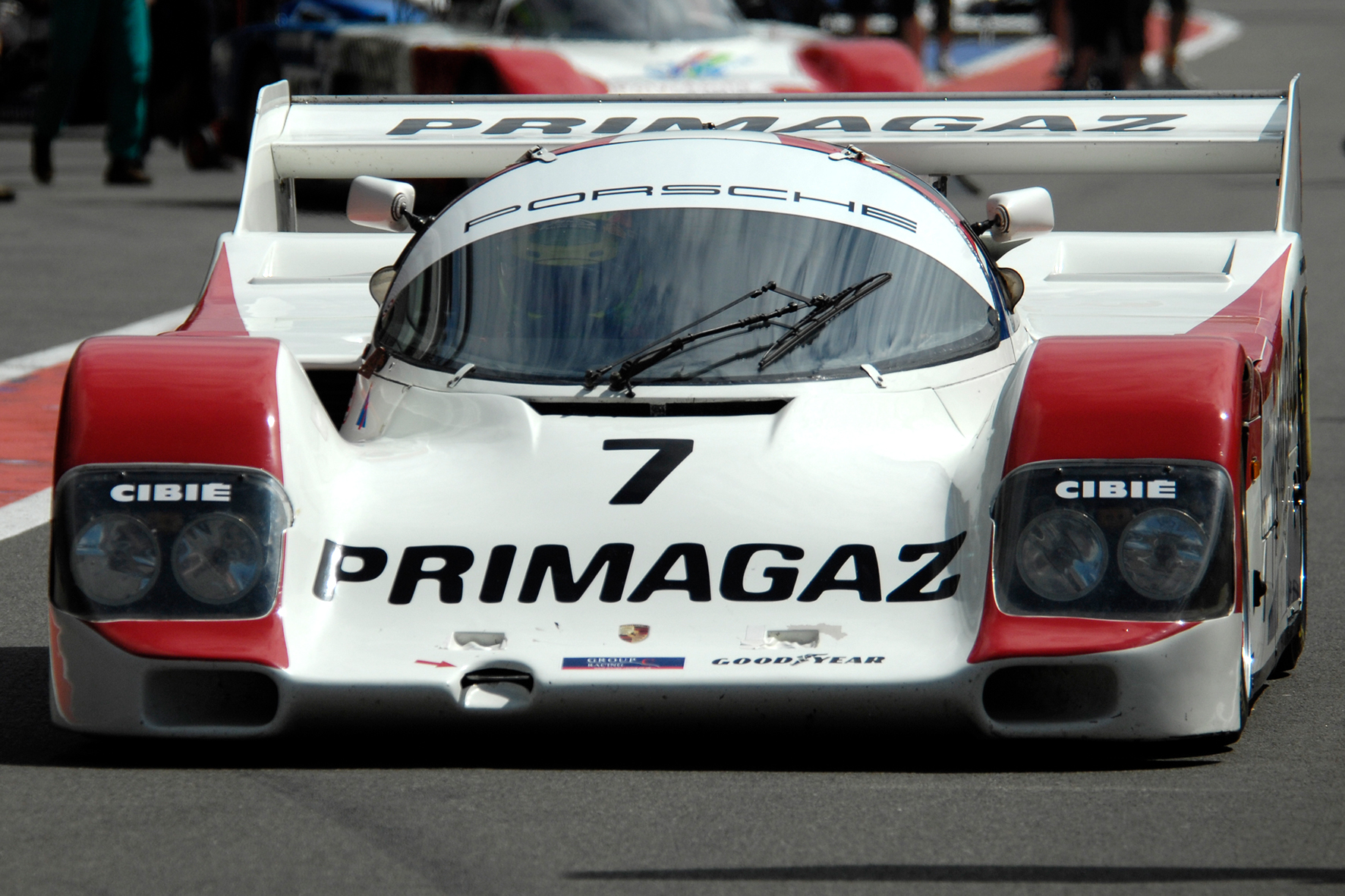
Stefan Bellof was the fastest man with the Porsche 956 in this time and became World Champion in 1984. Bob Wollek said about Bellof: „Since Jesus nobody could walk over water“. Stefan Bellof could do it, showing his older colleagues what ist possible with the Porsche 956. He also set great performances at Formula One racing and it would be very thrilling to see him fighting agains another young and very fast driver from Brazil, Ayrton Senna.
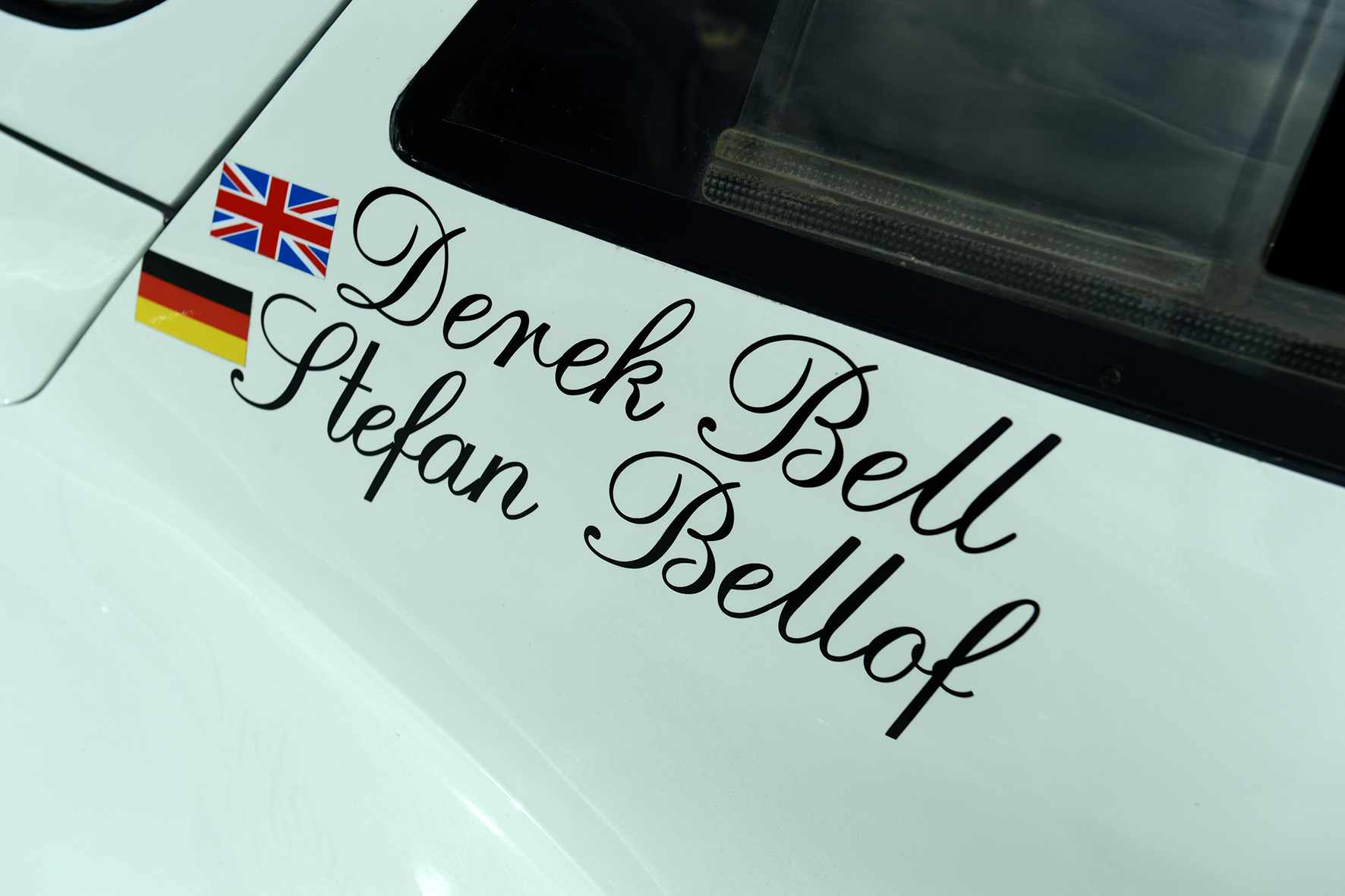
But in 1985 at the 1000 km race at Spa Francorchamps Stefan Bellof died at a fatal crash after colliding with Jacky Ickx Porsche at Eau Rouge corner. A few weeks later Manfred Winkelhock died at the wheel of a Porsche 956 at the Mosport track in Canada.
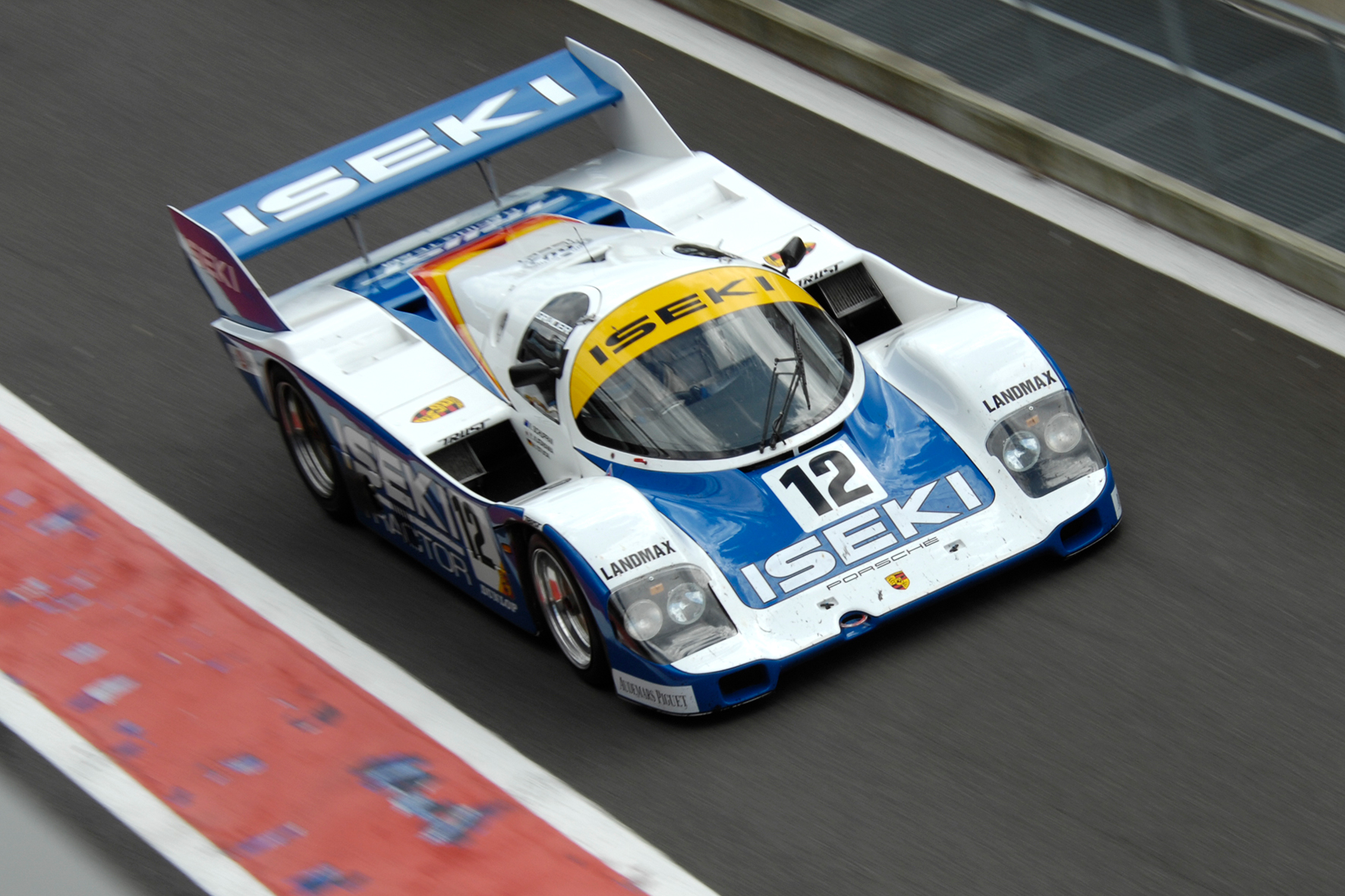
This is the dark side of the Porsche 956 / 962 race car. It was the most successful race car ever appeared at the race tracks over the world and is today an often seen guest at many historic Motor racing events.
Porsche 956 / 962: TECHNICAL SPECIFICATION
MODEL 956 / 962
TYPE Group c race car
YEAR OF PRODUCTION 1982 – 1986
ENGINE 6-cylinder boxer 180 ˚, air-cooled
BORE AND STROKE 92,3 mm x 66 mm
CUBIC CAPACITY TOTAL 2649 cc
VALVE TRAIN DOHC, 4 Valve per cylinder
FUEL FEED Bosch Motronic, 2 KKK Turbocharger
TRANSMISSION five speed + revers PDK gearbox
HORSEPOWER 620 bhp at 8200 rpm
TORQUE 630 Nm at 5000 rpm
CHASSIS aluminium monocoque
BODYWORK fibreglass
BRAKES 30 mm discs all around
SUSPENSION FRONT double wishbones with titan dampers
SUSPENSION REAR double wishbones with titan dampers
WHEELBASE 2770 mm
LENGTH 4770 mm
WIDTH 2000 mm
HEIGHT 1030 mm
TRACK FRONT / REAR 1648 mm / 1548 mm
WEIGHT WITHOUT FUEL 820 – 840 kg
TYRES FRONT / REAR 300/625-415 / 350/680-415
FUEL CAPACITY 100 liter
MAXIMUM SPEED 360 km/h

